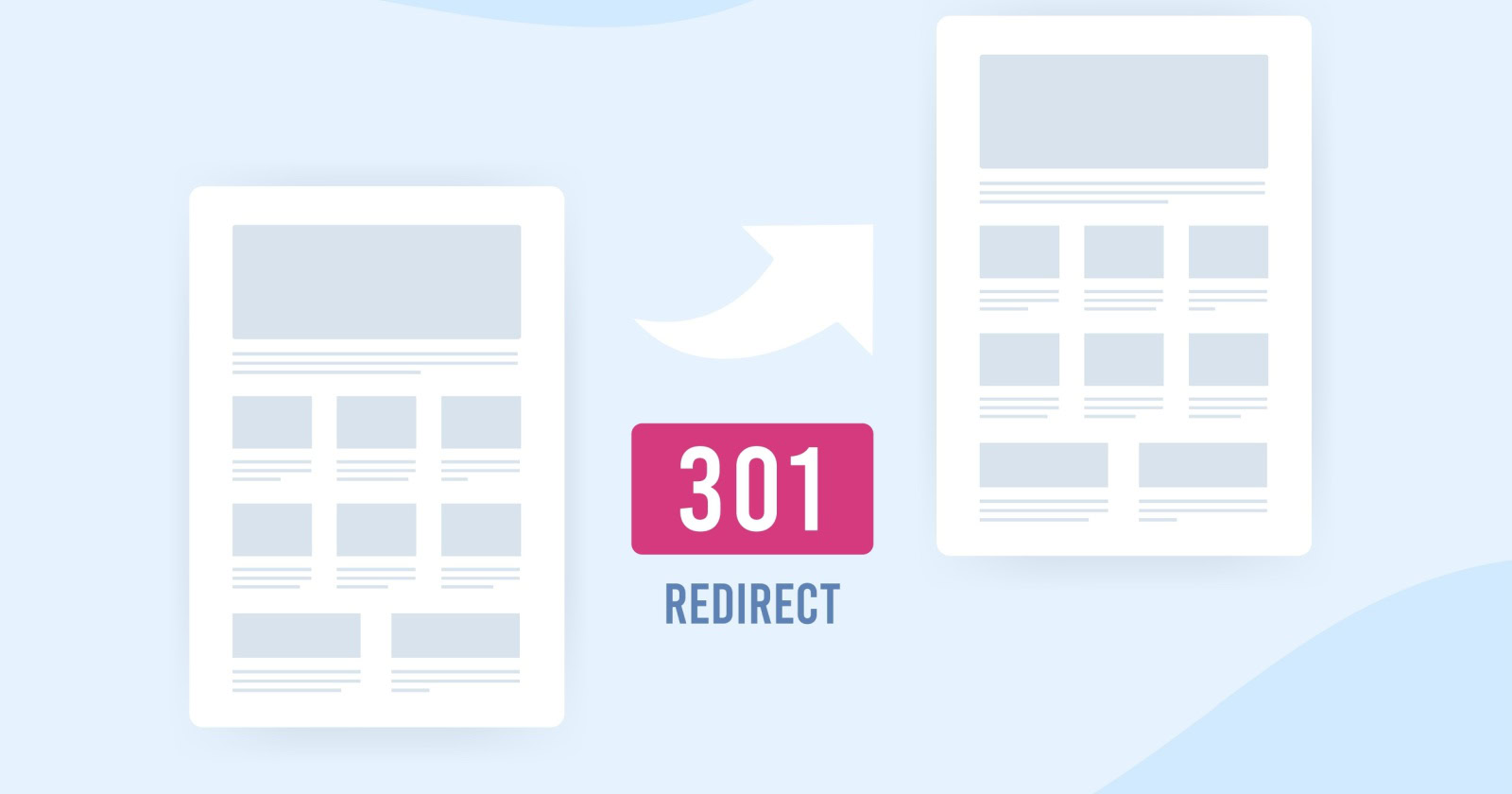When managing a website, choosing the right type of redirect is crucial for ensuring a smooth user experience and maintaining SEO performance.
While there are multiple ways to redirect a webpage, the two most common redirects are 301 (permanent) and 302 (temporary).
They both have distinct purposes, and selecting the wrong one can affect your site’s rankings and traffic.
In this guide, we’ll break down the differences between 301 and 302 redirects, provide practical examples of their usage, and explain how each impacts your SEO.
Table Overview: 301 Vs. 302 Redirects
| Criteria | 301 Redirect | 302 Redirect |
| Definition | Permanent redirect to a new URL. | Temporary redirect to a new URL. |
| Search Engine Impact | Passes link equity (ranking power) to new URL. | Does not pass link equity to the temporary URL. |
| When To Use | Domain moves, content migration, URL consolidation. | A/B testing, site maintenance, limited-time offers. |
| SEO Transfer Value | Transfers SEO value and rankings. | The original page retains SEO value. |
| Indexing In Google | The new URL gets indexed. | The original URL remains indexed. |
Now, let’s cover some basics.
What Are HTTP Response Status Codes?
When you visit a website, your browser (like Chrome or Safari) asks the website’s server to send over the webpage so it can show it to you.
Search engines also request this information to index and rank the webpage.
The server responds with a message that lets the browser or search engine know if the request was successful or if there was a problem.
These messages are called HTTP Response Status Codes. They tell the browser whether to show the page, display an error, or take another action (like redirecting you to a different page).
For search engines, these codes help determine how the page should be indexed or whether it should be crawled, redirected, or removed from search results.
There are five main types of HTTP Response Status Codes:
- Informational responses (1xx): This means the server received the request and is working on it, but the process isn’t done yet.
- Successful responses (2xx): Everything went well. The server received the request, understood it, and provided the webpage as expected.
- Redirection responses (3xx): The webpage has moved somewhere else, and the browser or search engine needs to go to a new location to get it (i.e., a redirect).
- Client error responses (4xx): There’s a problem with the request from the browser, such as a page not being found (e.g., 404 Not Found).
- Server error responses (5xx): The server couldn’t complete the request, usually because something went wrong on the server’s end.
What Are 301 And 302 Redirects?
301 and 302 redirects tell browsers and search engines that the webpage is no longer available at the requested URL.
They also say that the webpage has moved to a new URL and instruct the browser or search engine to automatically navigate to the new location.
Here are some reasons why you might need to redirect a webpage:
- To specify the canonical (preferred) version of a URL (e.g., with or without “www”) so all visitors and search engines are directed to the same page.
- To launch a new website or update a specific page and guide users to the correct content.
- To force the browser to use the secure version of your site (HTTPS) when users try to access the non-secure version (HTTP).
- To temporarily send users to a different page while the original one is being updated or fixed.
- To redirect outdated content to a newer, more relevant page in order to keep your site up to date.
- To fix broken or deleted pages by sending visitors to a functioning page instead.
Whether you should use a 301 or 302 redirect depends on what you’re trying to achieve.
Choosing the wrong type could negatively impact your SEO. While choosing the correct redirect ensures you maintain your current rankings.
What Is A 301 Redirect?
A 301 redirect tells browsers and search engines that a webpage has been moved permanently to a new URL.
It signals that the original URL should no longer be used, and all traffic should be sent to the new location.
Pro tip: According to Google’s John Muller, it’s good practice to keep 301 redirects in place for at least a year.
This is because any links to the old URL will become broken links once the redirect has been removed. In other words, keeping the redirect active for a year or more ensures you don’t lose traffic if people still link to the old URL.
When Should You Use 301 Redirects?
A 301 redirect is most useful when you’re making permanent changes to your website structure or content.
Here are some common scenarios where a 301 redirect is the right choice:
- Changing or moving the URL of a page: If you’re updating a page’s URL for better organization or readability – or if you’re moving it to a different location on your site – use a 301 redirect so that visitors and search engines can still find the page at its new address.
- Fixing broken pages (404 errors): If a page has been deleted and is no longer available, use a 301 redirect to send visitors to a similar page (or your homepage) so they don’t get stuck on an error page.
- Switching to a new domain: If you’re changing your domain name (for example, as part of a rebrand), use 301 redirects to send traffic from the old domain to your new one.
- Cleaning up and combining pages: If you’re merging similar pages into one, use a 301 redirect to ensure that anyone visiting the old pages is automatically sent to the new, combined version.
- Redirecting campaign landing pages: If you’ve created temporary landing pages for a promotion or campaign, you can use a 301 redirect to send visitors to a more permanent page after the campaign ends.
- Redirecting extra domain names: If you’ve bought extra domain names (like common misspellings of your brand), use a 301 redirect to send visitors who use those domains to your main website.
- Establishing a preferred domain: If you need to specify a preferred version of your website (e.g., “www.example.com” vs. “example.com”), a 301 redirect will ensure all visitors and search engines use the correct version.
- Merging websites: If you combine two websites into one, use a 301 redirect to guide traffic from the old site to the new one.
What Is A 302 Redirect?
A 302 redirect tells browsers and search engines that a webpage has been moved temporarily to a new URL.
Unlike a 301 redirect, a 302 redirect indicates that the original URL will be used again in the future.
When Should You Use 302 Redirects?
A 302 redirect is useful when you need to send visitors to a different page for a short time, without making permanent changes to your website.
You should only use a 302 if you’re planning to bring the old page back eventually.
Here are some common use cases:
- Testing or updating a page: If you’re working on a page and need to send visitors to another version temporarily, you can use a 302 redirect until the updates are done.
- Running an A/B test: If you want to test two different versions of a page to see which one works better, you can use a 302 redirect alongside an A/B testing tool to send some visitors to a test version of the page, while the rest see the original version.
- Temporarily promoting a different page: If you’re running a short-term promotion, you can use a 302 redirect to temporarily send users to a landing page for the promotion.
- Maintenance or downtime: If you need to take a page offline for maintenance, you can use a 302 redirect to send users to a different page while and keep the original URL in place for when maintenance is complete.
- Seasonal content: If you have content that’s only relevant at certain times of the year (like holiday sales), a 302 redirect can temporarily send visitors to the seasonal page.
How Do 301 And 302 Redirects Impact SEO?
Search engines treat 301 and 302 redirects differently – which is why it’s so important to choose the right one.
When you use a 301, Google transfers the authority, ranking power, and any backlinks associated with the old URL to the new location. This means the new URL inherits the SEO value that the original page built up over time.
Side note: With a 301 redirect, Google will eventually update its index (and, therefore, search results) to reflect the new URL. This usually happens fairly quickly.
When you use a 302 redirect, Google typically does not pass the ranking authority or backlinks from the old URL to the new one. And the original page continues to appear in the search results, since the change is only considered temporary.
Most problems only arise when people use a 301 or 302 redirect in the wrong context.
For example, using a 302 redirect when the change is actually permanent means Google won’t transfer the SEO value to the new URL. This could harm your new page’s ranking potential and limit your search visibility.
Likewise, if you use a 301 redirect for a change that’s only temporary, Google may treat the original page as permanently moved. This can cause it to lose rankings – even after you switch back to the original page.
How To Implement Redirects
According to Google:
“Setting up server side redirects requires access to the server configuration files (for example, the .htaccess file on Apache) or setting the redirect headers with server side scripts (for example, PHP).
You can create both permanent and temporary redirects on the server side.”
If you’re not sure how to do this, you can refer to resources like the Apache .htaccess Tutorial and a URL Rewriting Guide. These guides explain how to manage redirects through your server’s configuration files.
If your server doesn’t run on Apache, you’ll need to contact your host for specific instructions. Hosting platforms that use Nginx or Microsoft IIS will have different methods for setting up redirects.
For WordPress users, several plugins can simplify the process of creating redirects:
- Redirection: This plugin allows you to easily manage 301 redirects, track 404 errors, and provides an easy-to-use interface for creating various types of redirects.
- Simple 301 Redirects: This plugin focuses exclusively on 301 redirects and is perfect for creating simple, permanent redirects.
Redirects Impact Search Visibility
Understanding the differences between 301 and 302 redirects is crucial for maintaining your website’s SEO and ensuring a smooth user experience.
By choosing the right type of redirect for your needs, you can preserve your site’s ranking power and guide visitors to the correct pages efficiently.
More resources:
- URL Redirects For SEO: A Technical Guide
- How To Do JavaScript Redirects For SEO
- Advanced Technical SEO: A Complete Guide
Featured Image: BestForBest/Shutterstock





